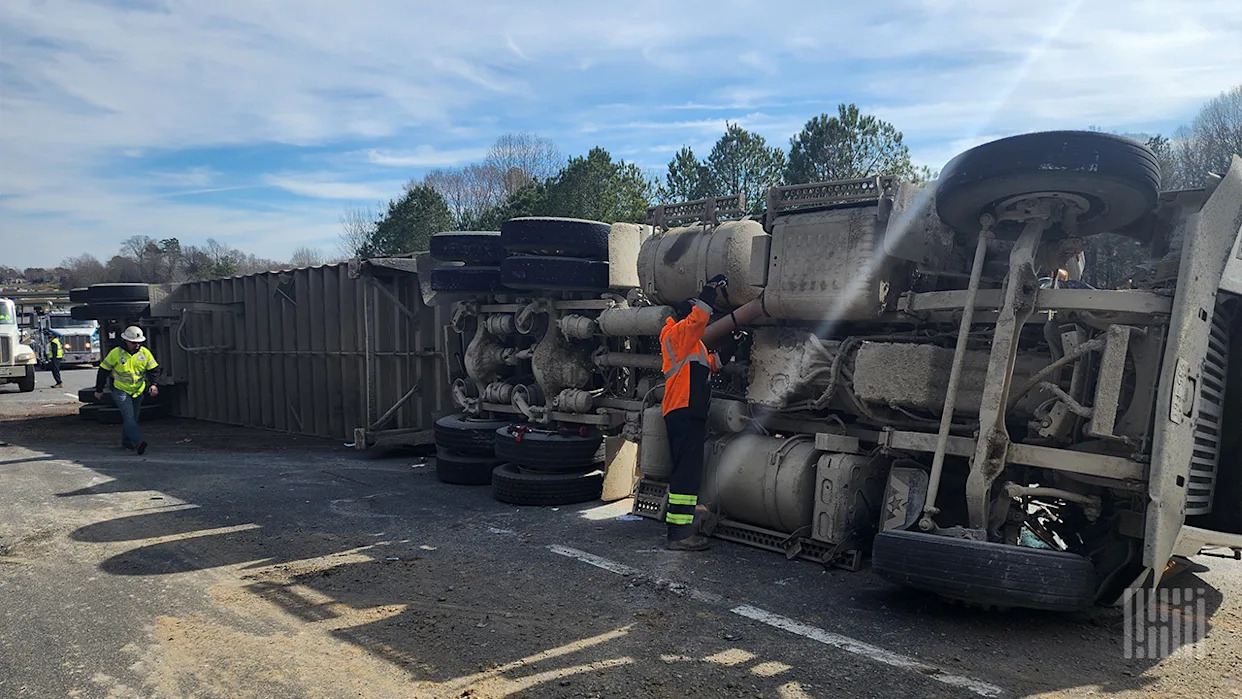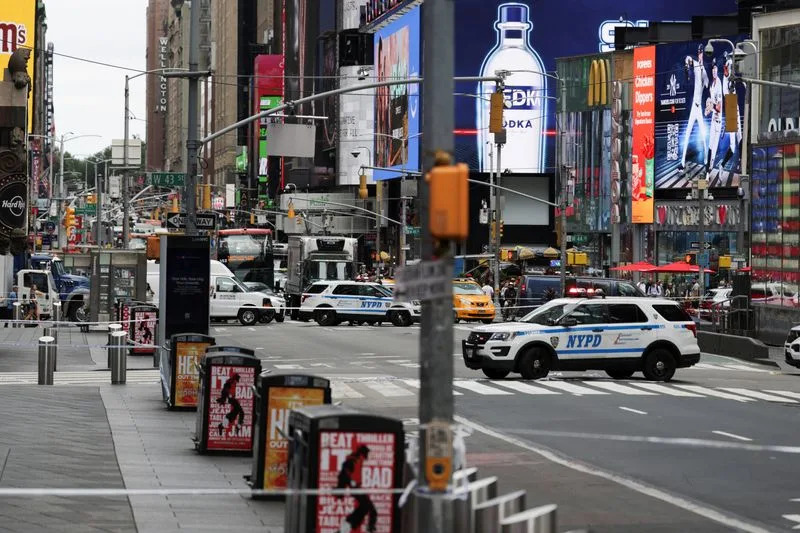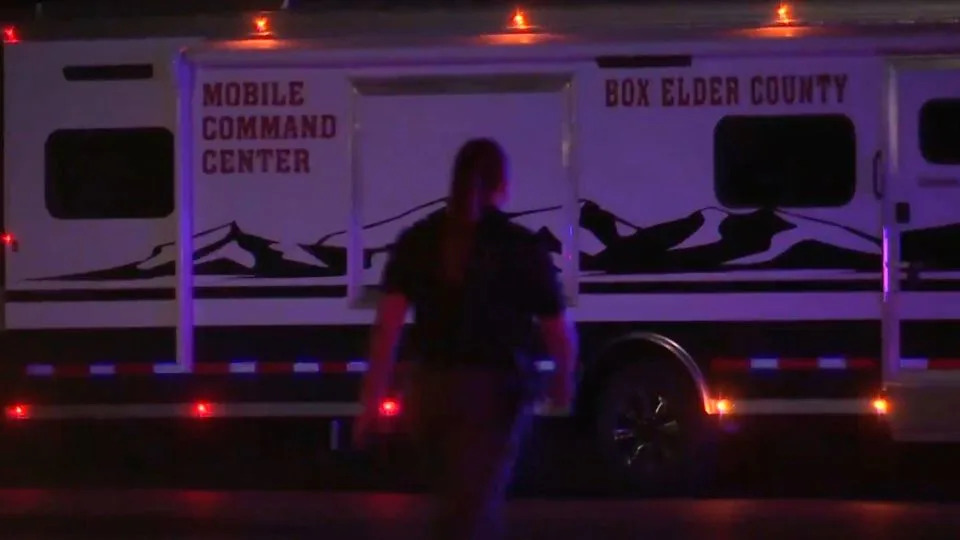
“The content in this article is for informative purposes only. No part of this article should be used as substitute for proper training; FreightWaves waives all liability for actions taken from of this article.”
A commercial tractor-trailer’s illegal U-turn on Florida’s Turnpike last week killed three people in a minivan that collided with the trailer at highway speed, putting new focus on critical flaws in commercial driver licensing and training standards that have made America’s highways increasingly dangerous.
The truck driver, operating for White Hawk Carriers and in the U.S. since 2018 and holding a California CDL, now faces three counts of vehicular homicide and likely deportation after making an illegal turn at an “official-use-only” median opening. The resulting underride crash, where the minivan went under the side of the trailer, represents a type of accident that federal safety regulators have struggled to address for years.
The Florida tragedy reflects deeper systemic failures, including a commercial licensing system that is so barrier-free that virtually anyone can obtain a CDL with minimal practical experience, cultural and language barriers that aren’t adequately addressed in training, and examination standards that prioritize processing over competency.
America currently has approximately 3.55 million truck drivers. Yet, the industry pushed a narrative of a shortage that created incentives and eliminated barriers to streamline licensing processes at the expense of safety standards. While we have a shortage of drivers for specific modes, such as those requiring more experience, licensing and endorsements, we do not have a driver shortage in general. Dock bumpers are a dime a dozen, which is often reflected in their pay that hasn’t increased and kept pace with the rise in cost of living or inflation.
California’s Assembly Bill 60 has issued more than 1 million driver’s licenses to undocumented immigrants since 2015, creating a pathway for commercial licensing without requiring legal presence in the United States. While AB 60 aimed to improve road safety by ensuring all drivers have basic training and insurance, critics argue it creates additional safety concerns when combined with minimal CDL training requirements.
The Federal Motor Carrier Safety Administration’s Commercial Driver’s License Information System reveals concerning demographic trends. CDL holders skew significantly older than the general workforce, with drivers under 30 severely underrepresented. This aging workforce creates pressure to recruit new drivers quickly, often at the expense of comprehensive training.
Cultural and Training Disconnects
I am a commercial driving instructor with 25 years of CDL experience, and I regularly receive calls from executives concerned about American licensing standards. Recently, Jochen Vogt, a German CFO in Richmond, Virginia, contacted me, as many C-suite folks do, to train his teenage son because he didn’t trust Virginia’s driver training.
Jochen cited how easy it is to get a driver’s license in the U.S. with minimal to no experience or proficiency, especially compared to the cost and extent of German training and requirements.
The cultural divide extends beyond individual training to fundamental driving philosophies. Federal data shows that while Asian and Hispanic/Latino workers are underrepresented in the CDL holder group, the industry increasingly draws from countries with vastly different trucking cultures and regulations.
When traveling to Wales, you will encounter signs in traditional English and Welsh, with some displaying only Welsh, which can be an issue for anybody who doesn’t speak Welsh. This analogy illustrates a serious point and one of cultural understanding that affects vehicle operation safety, and current licensing standards don’t adequately address these differences.
The Manual Transmission Barrier
One of the most significant barriers to CDL acquisition has shifted almost entirely over the past 20 years from manual transmissions. Less than a decade ago, only 10% of heavy-duty trucks had automatic transmissions. Today, nearly 90% come equipped with automatics, with some manufacturers reporting adoption rates above 95%.
In the passenger car market, only 3.5% of vehicles sold in 2018 were manual transmissions, dropping from 6.8% in 2012. By 2022, more than 99% of all light-duty vehicles came with automatic transmissions.
This shift eliminated a natural screening mechanism that required extensive practice and coordination to master. Freightliner reports that 85% of its semi-trucks now have automated transmissions, up from about 10% five years ago.
We’ve stripped barriers to entry but ignored the consequences. Does any other high-stakes profession demand so little practical training? We should be asking that.
State-by-State Licensing Disparities Create Dangerous Gaps
The patchwork of state licensing requirements creates alarming inconsistencies in driver preparation. Thirteen states do not require formal driver’s education for teenagers to obtain an initial driver’s license.
Inadequate or non-existent driver training can mean a 16-year-old in these states can obtain a license without practical driving experience, then transition to commercial driving at 18 with minimal additional training. California, where the Florida crash driver obtained his CDL, requires just 15 hours of behind-the-wheel ELDT training for Class A and B commercial licenses.
States like Arizona allow teen drivers to forego formal classroom training and instead drive a minimum of 30 hours, with 10 hours at night. Wyoming requires 50 hours of driving with parents or guardians, with 10 hours at night, but no formal instruction.
AB 60 and Legal CDLs Without Legal Presence
California’s AB 60 licenses look identical to regular driver’s licenses but are marked “Federal Limits Apply” in the upper right corner. More than 1 million AB 60 licenses have been issued to undocumented immigrants, with more than 700,000 renewals.
A 2017 study published in the Proceedings of the National Academy of Sciences found that AB 60 had no discernible effect on accident rates and decreased hit-and-run accidents. However, the law creates a pathway for undocumented drivers to obtain commercial licenses while potentially lacking a comprehensive understanding of U.S. traffic laws and driving culture.
During 2015, the first year of implementation, well over 600,000 people received California driver’s licenses under AB 60. The law includes anti-discrimination protections, but critics argue it creates safety concerns when combined with minimal CDL training requirements.
The Demographics of Danger
Federal workforce analysis reveals that 83.6% of CDL holders are male, with female drivers significantly underrepresented compared to the general labor force. The CDL workforce skews older, with drivers under 45 underrepresented compared to other occupations.
Asian and Hispanic/Latino workers are underrepresented in the CDL holder group. At the same time, the data shows the industry draws increasingly from immigrant populations that may lack familiarity with American driving culture and regulations.
The CDL holder group includes more veterans but fewer immigrants and workers with limited English proficiency than the general labor force. However, the growing diversity in driver origins creates training challenges that current ELDT requirements don’t adequately address.
Training Standards In A Race to the Bottom
Current Entry-Level Driver Training requirements, implemented in 2022, represent progress but fall short of comprehensive reform. While some states maintain rigorous behind-the-wheel requirements, others rely heavily on written tests and minimal road time.
I’ve been driving 30 years, have had my CDL for 25 of those, and have been instructing for 15 years in everything from motorcade to teen to CDL to offensive, defensive and EVOC. Eighty percent of what I know about commercial driving, I learned while driving a truck.
The instructor’s credentials matter. Rose Crist at Virginia DMV did mine. If you got a CDL from Rose, you earned it. We need that ‘mom-level’ oversight back.
Today’s examination system often prioritizes processing volume over competency assessment. Examiners may lack the experience or authority to maintain rigorous standards, creating a pipeline of inadequately prepared drivers.
The Underride Problem
While rear underride guards are federally mandated on trailers, side underride guards remain optional despite repeated National Transportation Safety Board recommendations. The distinction proved fatal in Florida, where the high-speed side impact with the trailer created an unsurvivable collision.
Research shows that underride crashes often prove fatal because trailer decks sit at windshield height for passenger vehicles. Federal regulators have yet to act on NTSB recommendations for mandatory side guards, leaving a patchwork of voluntary compliance.
Economic Pressures vs. Safety Standards
The medium-duty truck premium for automated manual transmissions averages $600 to $3,000 per gearbox, increasing to $1,000 to $5,000 for heavy-duty units. Fully automatic transmissions command premiums of $3,000 to $6,000 for medium-duty and $6,000 to $10,000 for heavy-duty applications.
These costs, combined with persistent narratives of a generalized driver shortage, create pressure to streamline licensing processes. Safety experts argue that relaxed standards ultimately increase liability exposure, insurance costs, and regulatory scrutiny that harm long-term industry interests.
International Perspective and What America Can Learn
European trucking companies adopted automated transmissions earlier than those in the U.S., but they maintained rigorous training standards. Volvo introduced its I-Shift transmission in Europe in 2002, and by the late 2000s, about 75% of European trucks had automated transmissions.
European licensing requires extensive practical training and cultural integration that far exceeds American standards. German commercial licensing, for example, requires months of training and substantial financial investment that effectively screens who gets on the highway.
The contrast highlights how America has chosen a literal smorgasbord of convenience, politics, agenda, lobbyist narrative, over competency in commercial driver development.
Systemic Reform Needed
If we want to change what happens on our highways, we need to change who gets on our roads and how they get there, and it needs to be a common-sense, objective standard. If we can organize a single registration for interstate fleets across all states, we can organize a single training and licensing standard for all class licenses.
Mandatory standardized training: Require consistent, in-person behind-the-wheel training across all states, with federal minimum standards that exceed current ELDT requirements.
Cultural integration programs: Develop specialized training that addresses cultural differences in driving habits for immigrants from countries with different traffic patterns and regulations.
Practical examination reform: Restore rigorous, disciplined examination standards with experienced evaluators who maintain high standards rather than processing volume.
Underride guard requirements: Mandate side and rear underride guards on all commercial trailers to reduce fatality risk in collisions.
Enhanced ELDT standards: Mandate minimum behind-the-wheel training hours and require demonstrated competency rather than subjective module-based completion.
The way we prioritize enforcement of carriers and grant them operating authority is broken. White Hawk Carriers, Inc., insurance was due to be canceled this week by Great West, even before the crash took place. White Hawk’s out-of-service rates for both driver and vehicle far exceed the national average, mainly due to a history of systemic, unsafe violations.
While California State Corporation records indicate White Hawk Carriers, Inc., was started by Navneet Kaur in 2016, Navneet Kaur was also listed as a Director for White Star Trucking out of Modesto, which closed in 2013. The www.whitestartrucking.com domain was still listed on White Hawks’ Facebook page as of August 17, 2025, but was removed as of the time of this story. The agent for White Star was listed as Kuljeenpal Bhullar. Both Bhullar and Kaur have countless ties to other logistics, trucking and transportation entities.
Chameleon carriers, where companies close and ownership opens up other businesses at other addresses, or through proxies and can be a way to subvert regulation and oversight by simply closing a poor-performing operation and opening another. This creates enforcement concerns as companies can merely attempt to conceal ownership through legal entities and proxy owners to continue to operate following a history of poor safety performance, which can also lead to insurance cancellation.
Harjinder Singh’s (the truck driver at the heart of the Florida crash) path from 2018 arrival to 2025 vehicular homicide charges shows us how current systems can place unprepared drivers in positions where split-second decisions determine whether families return home safely. Management may not see drivers for weeks or months. Still, with fleet tech to manage drivers and vehicles, we should be prioritizing the use of fleet telematics and managing that data to improve fleet management and to train and mold better drivers.
Until changes in training and licensing standards happen, headlines like Florida’s will continue. Unsafe operations plus inadequate training equals disaster. The three lives lost on Florida’s Turnpike represent more than tragic statistics; they brought to the surface an urgent need for fundamental reform in how America trains and licenses the drivers of its most dangerous vehicles.
The question isn’t whether the trucking industry can afford to implement higher training standards. The question is whether America can afford not to.
The post Fatal Florida Crash Exposes Dangerous Gaps in Commercial Driver Licensing Standards appeared first on FreightWaves.








Comments